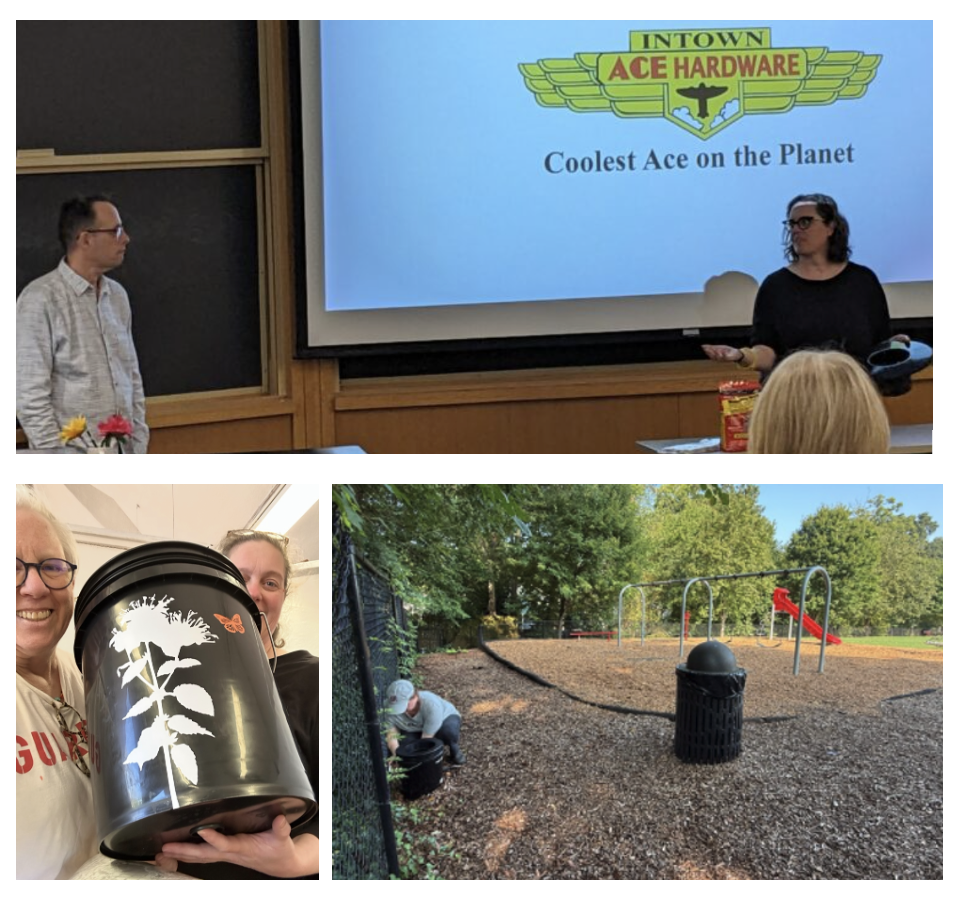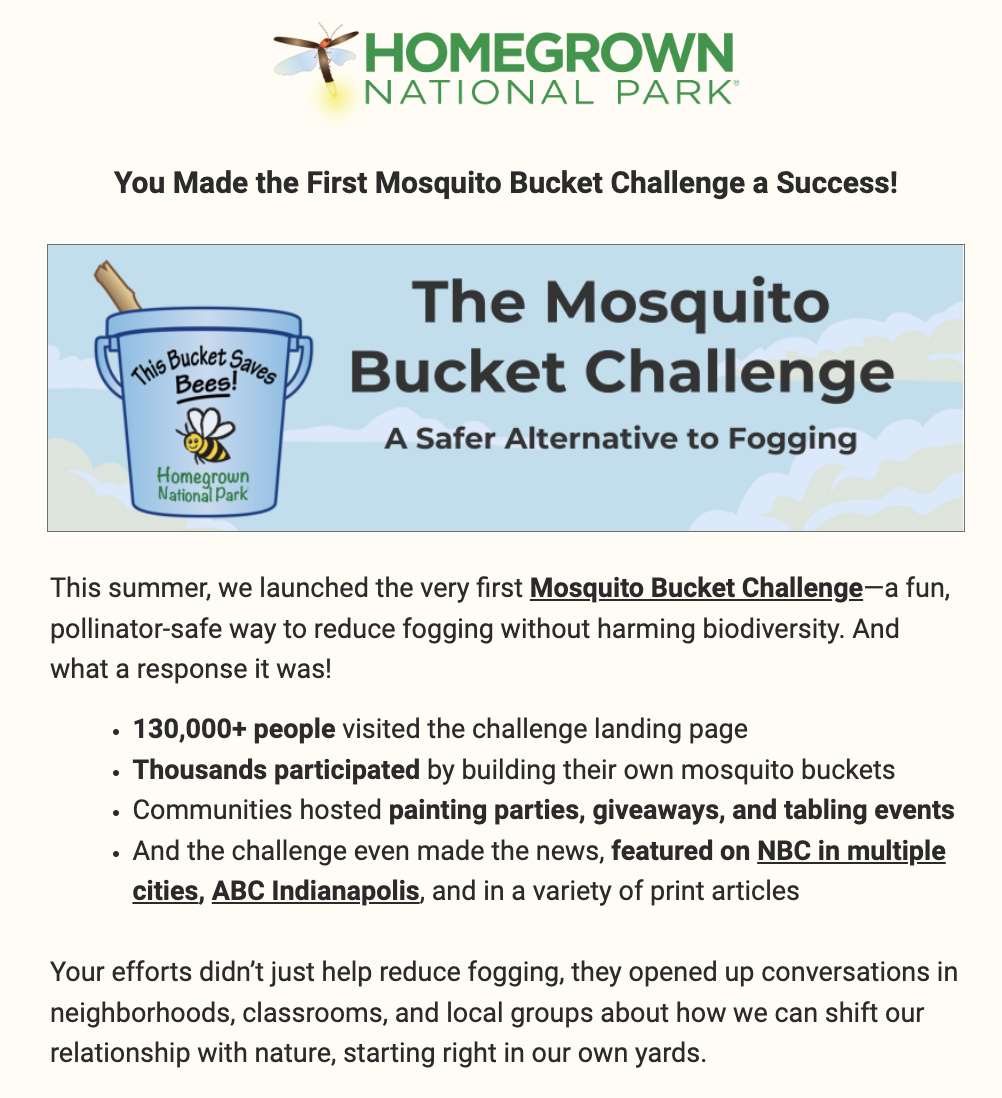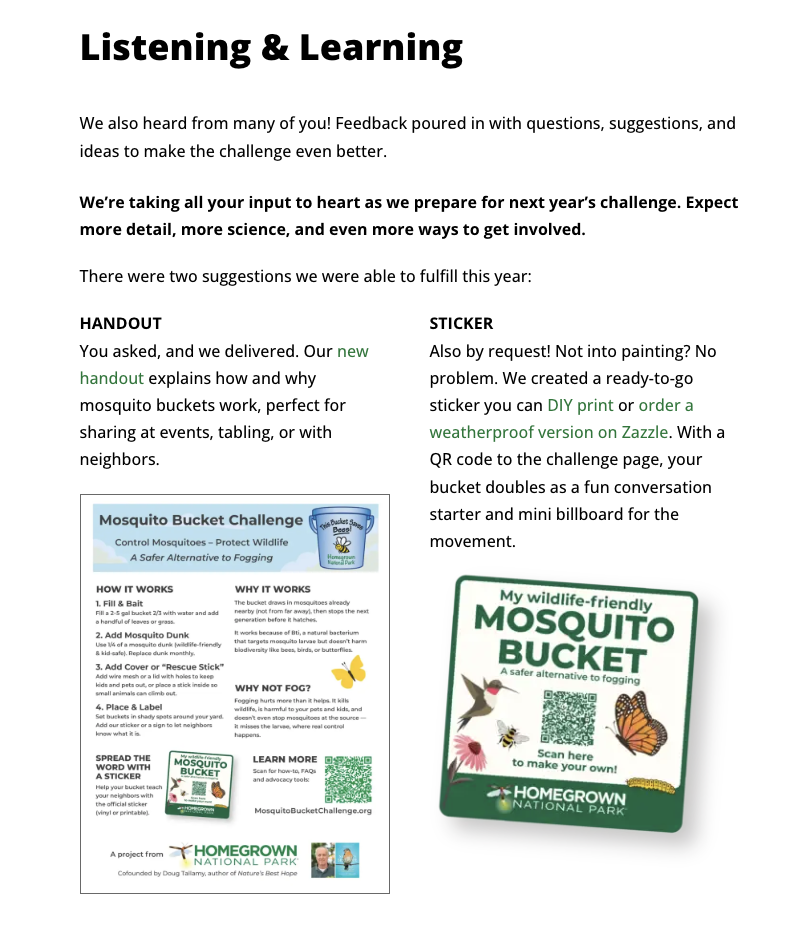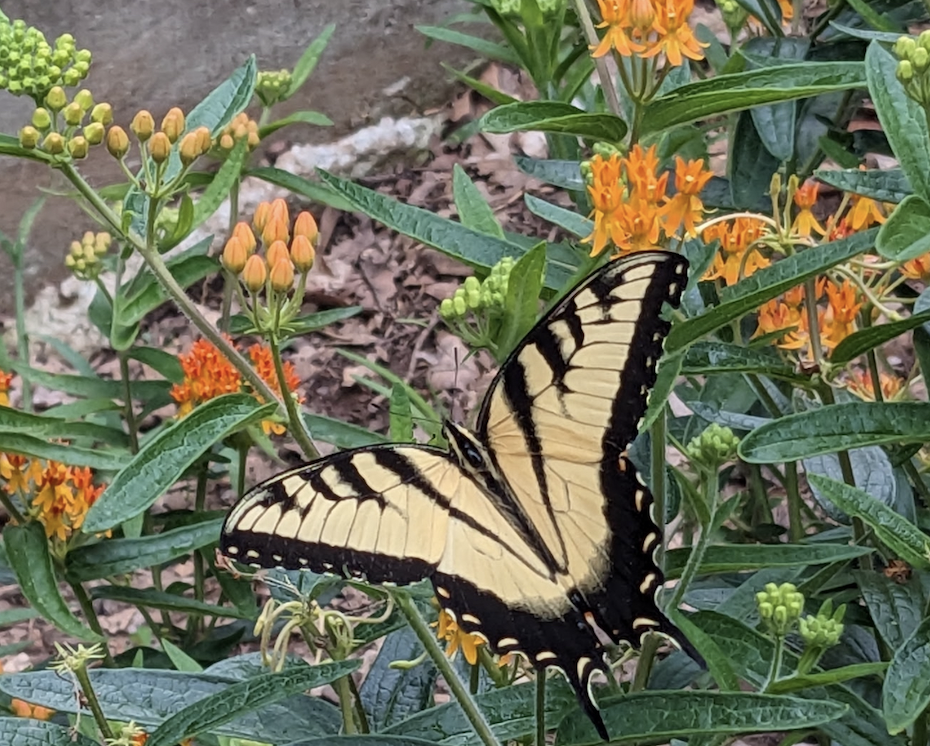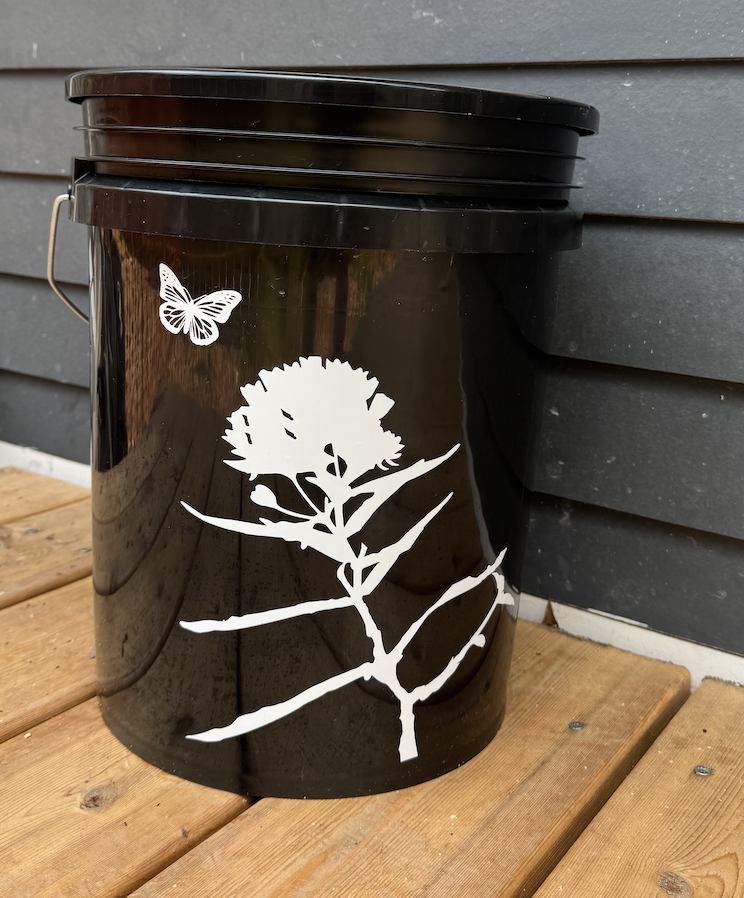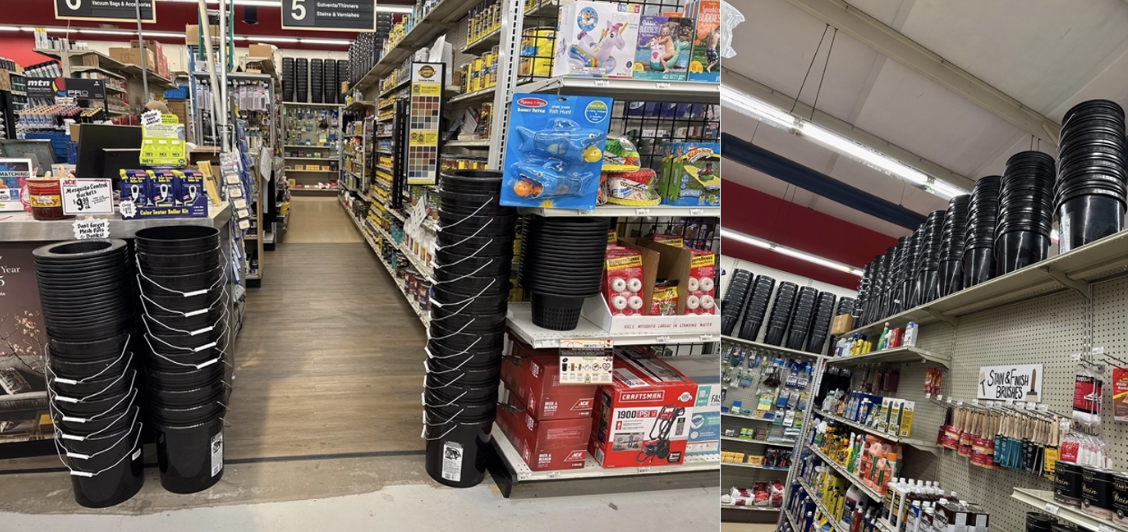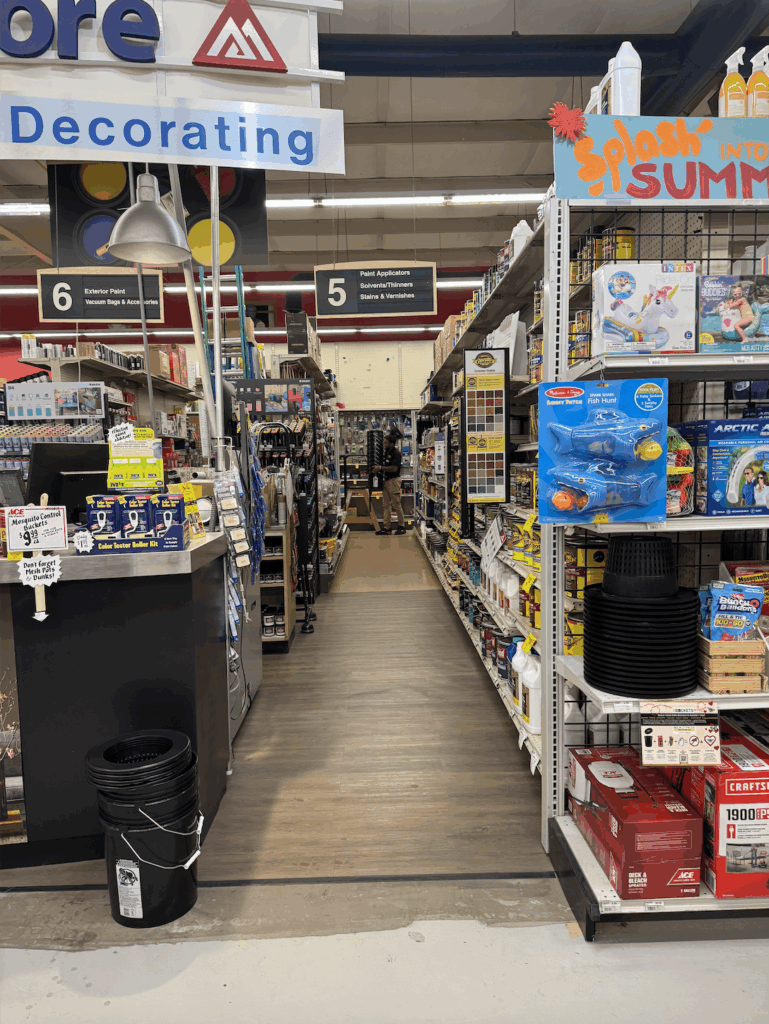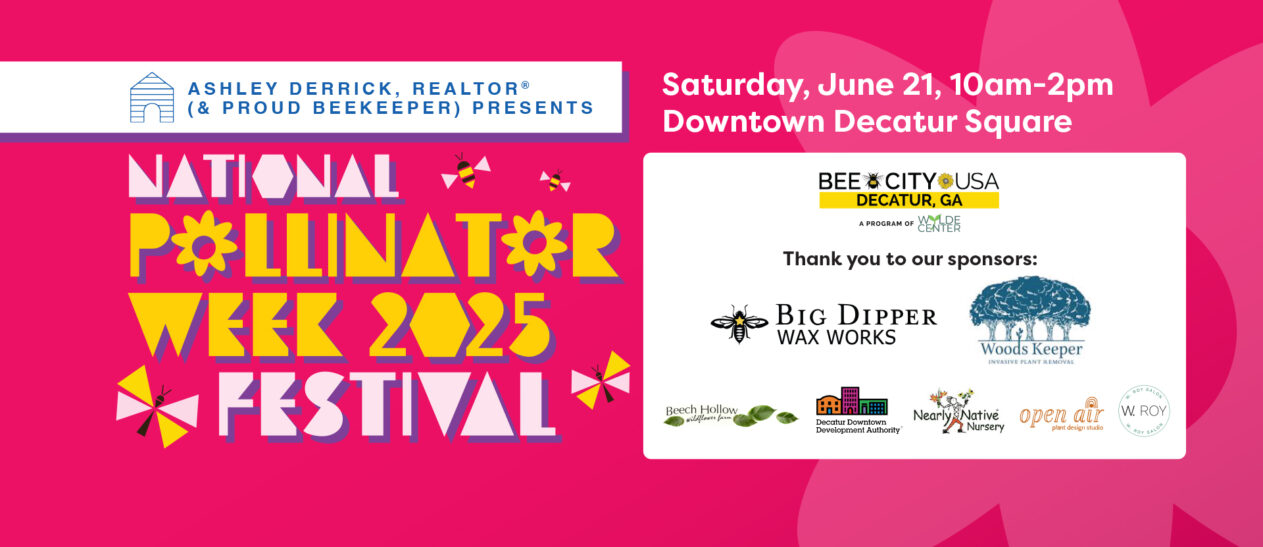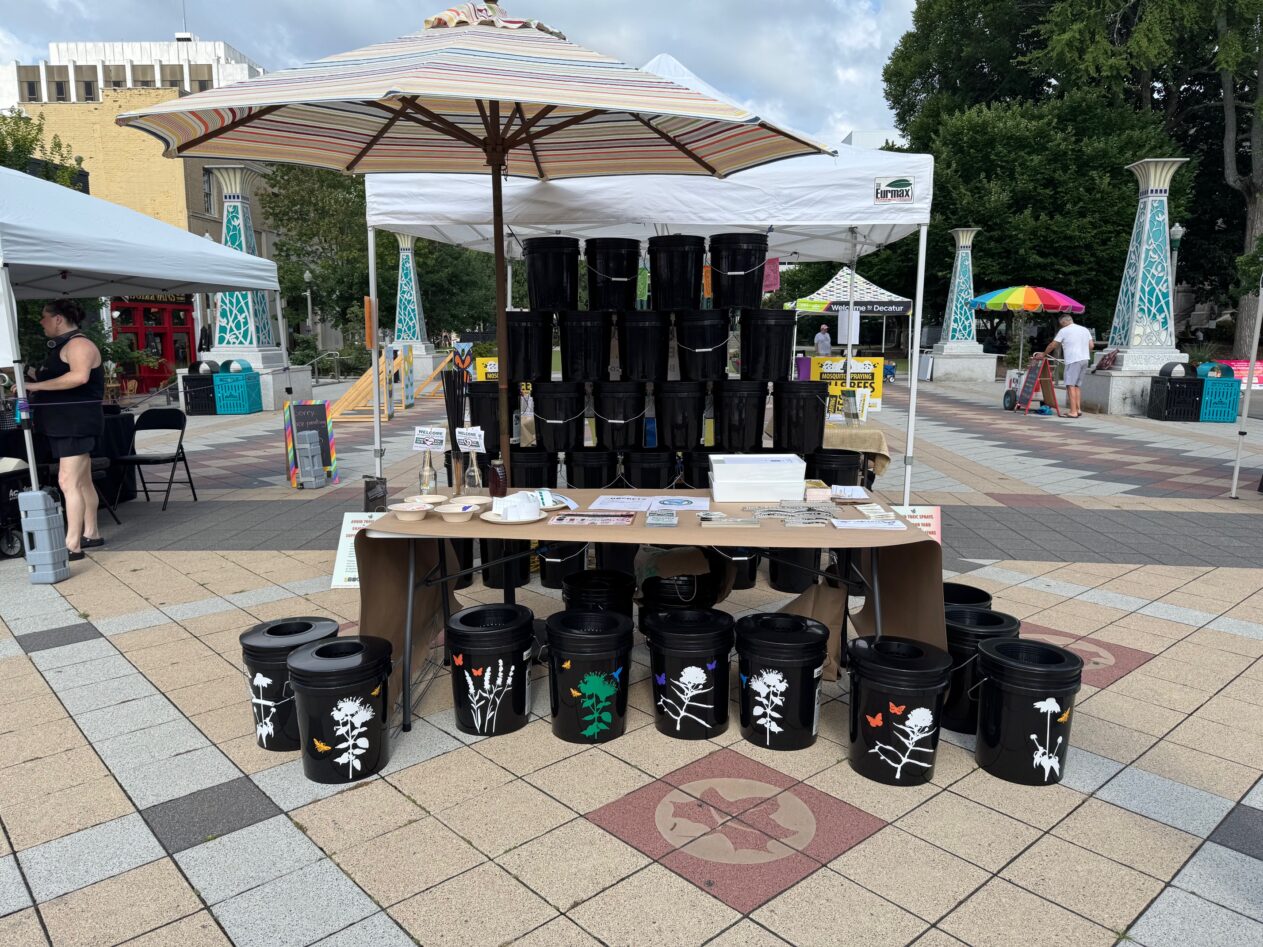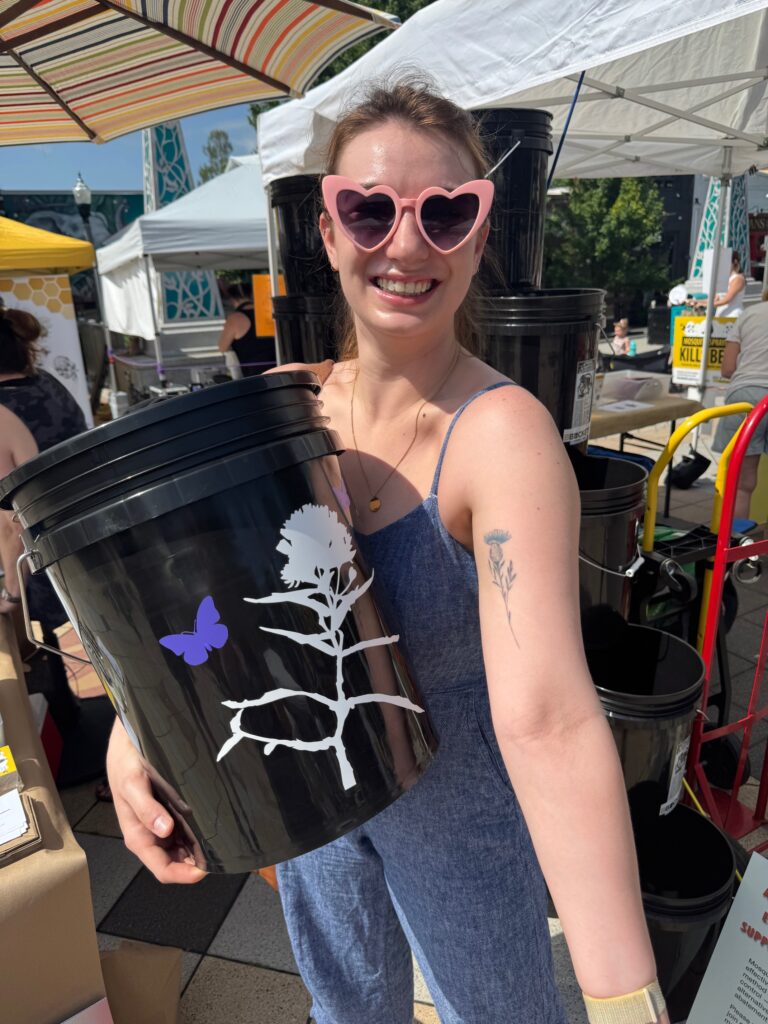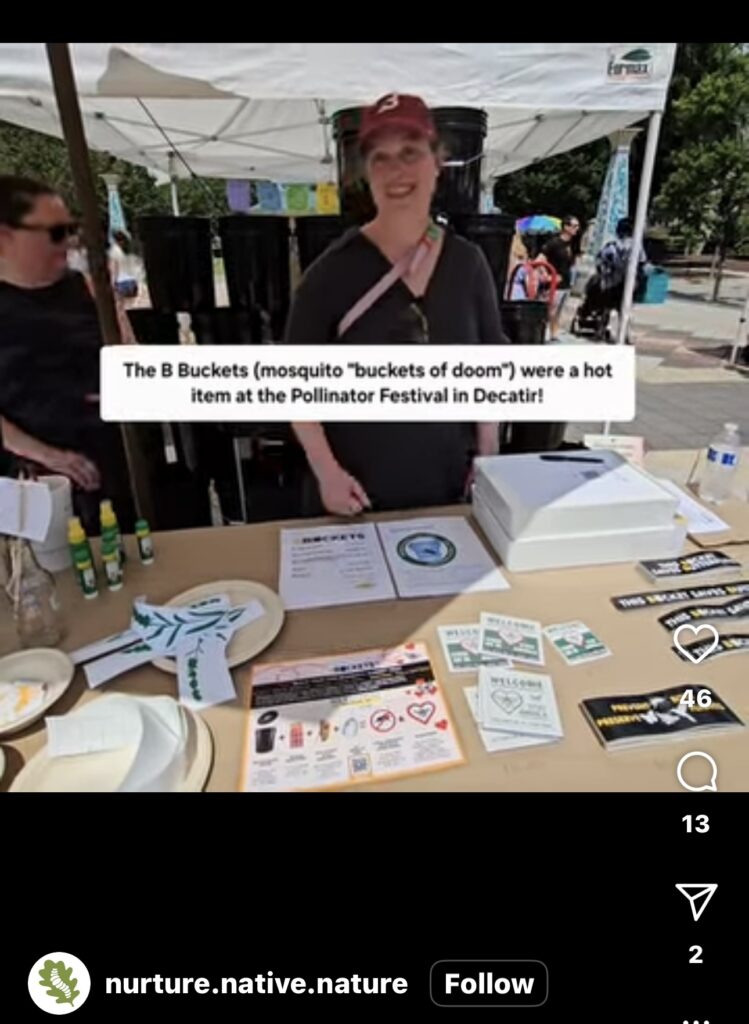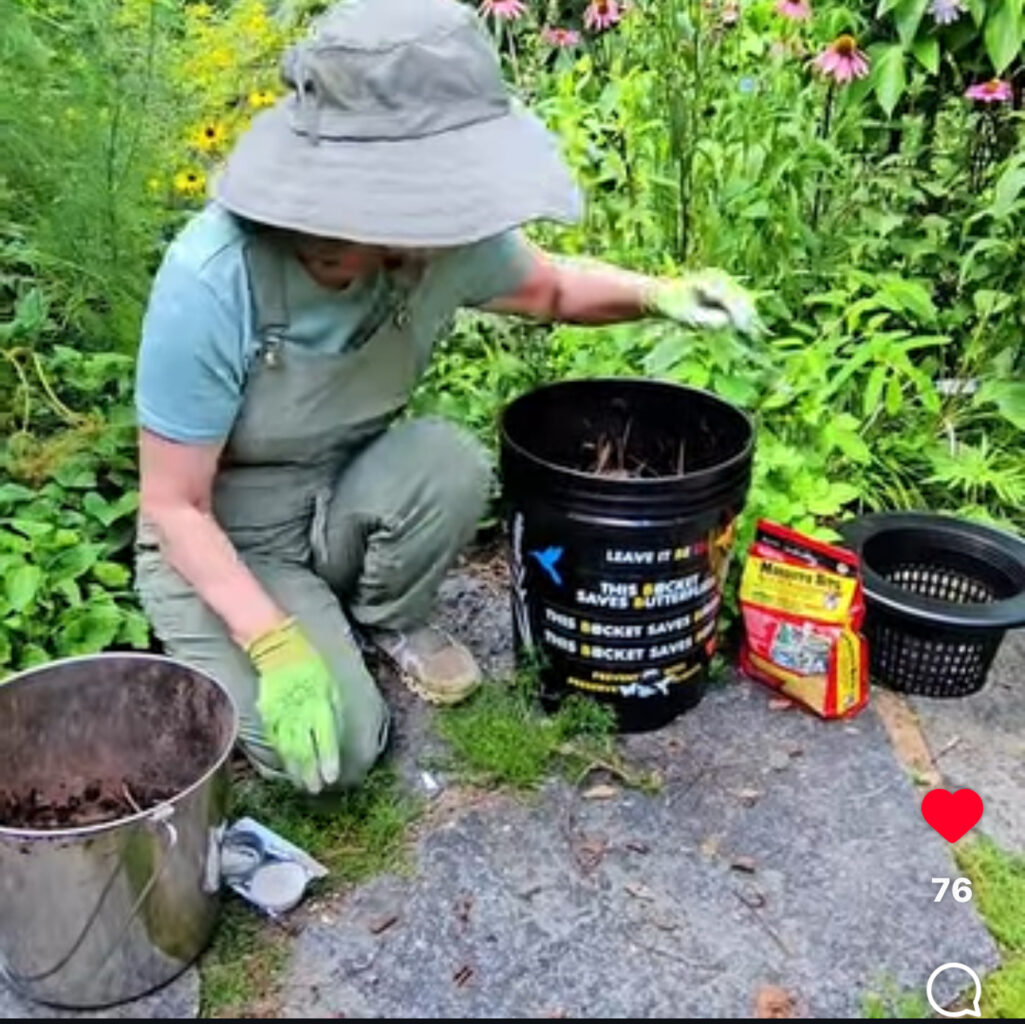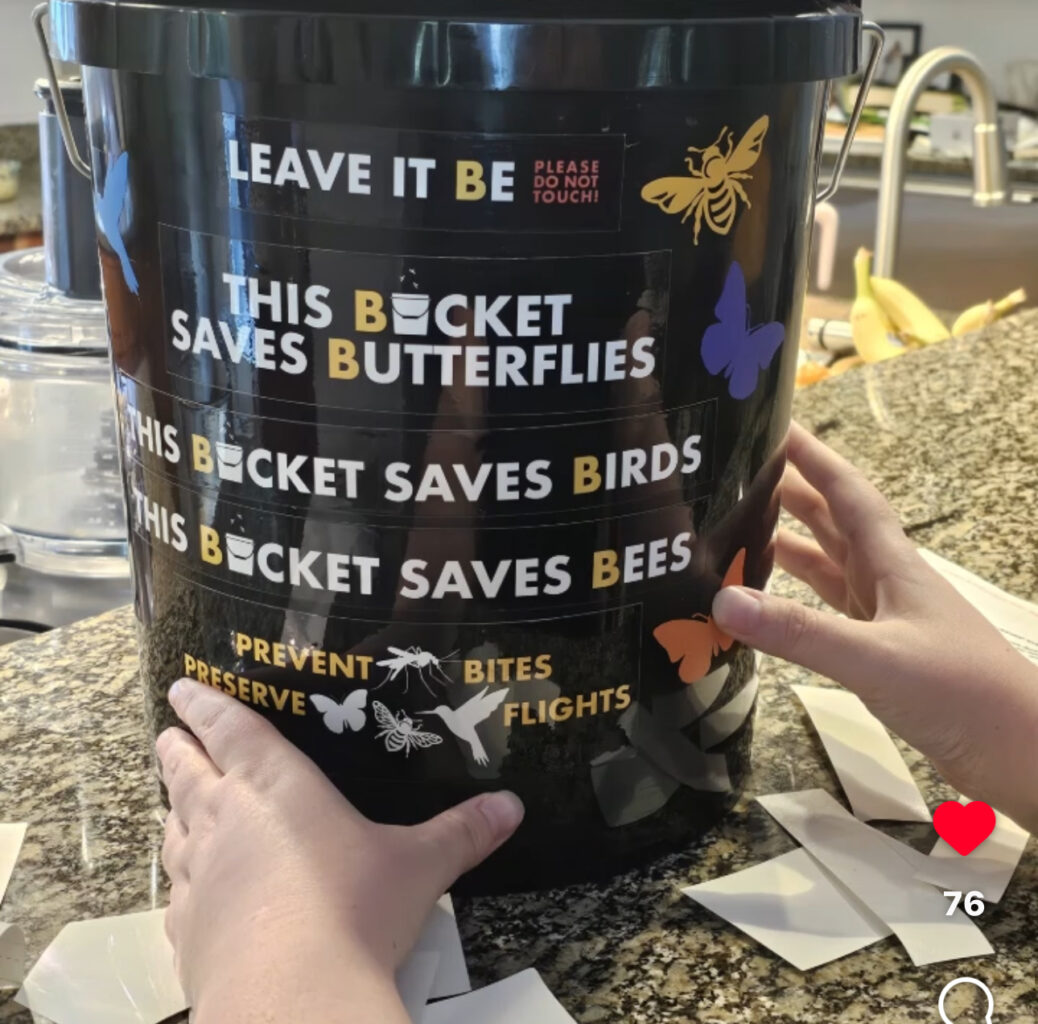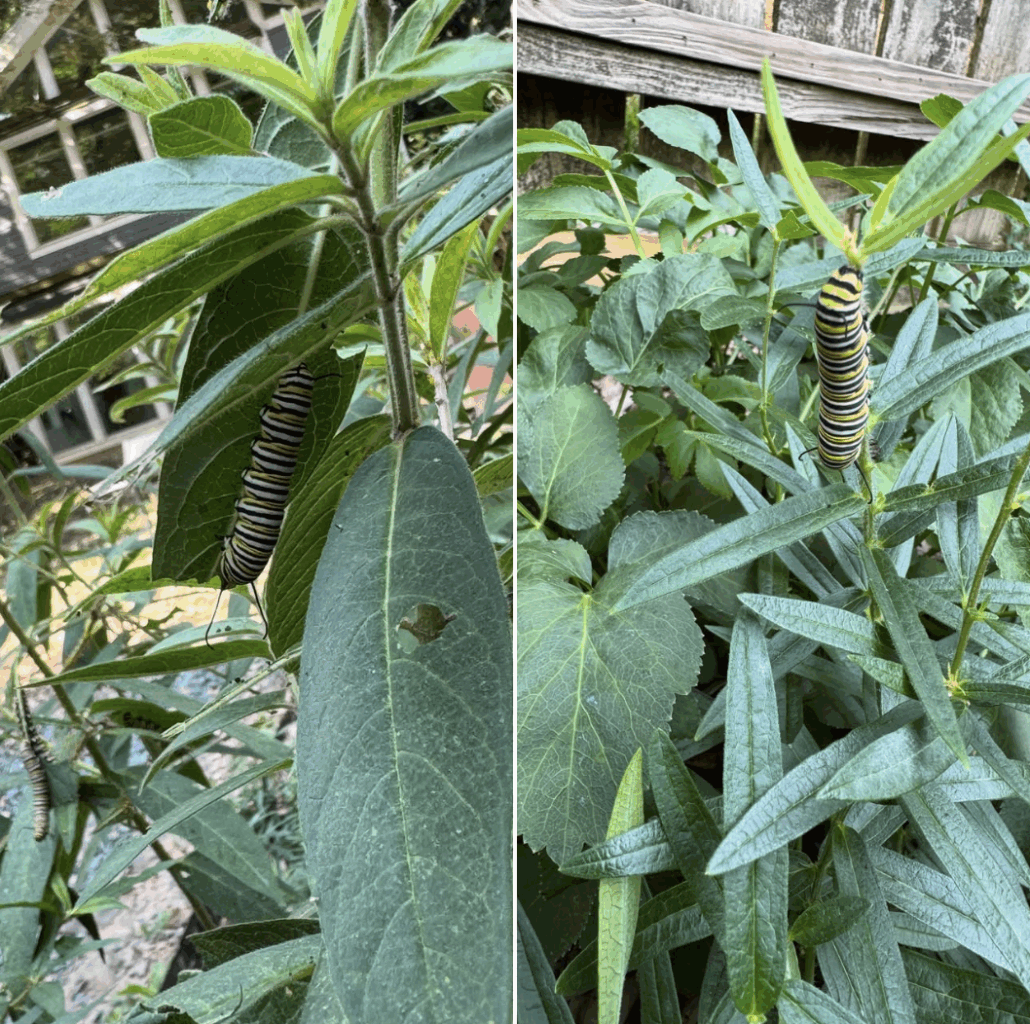
Over the years, I have attended various from church services in which the congregation is invited to share, anonymously or not, individual joys and concerns from previous or in future weeks for communal celebration and/or care. In that spirit, if not that context, I am making those at the top of my list this week.
First the joys: On Sunday I found 13 monarch caterpillars on my milkweed, a welcome surprise after keeping eyes out all summer. I have spent the last three years adding native plants to our yard, which has been chemical free for most of the last 25+ years (full disclosure: even we hired a company to fog for mosquitoes one time in 2012 before we knew better and in advance of our backyard wedding). I have planted 10 butterfly weed plants in the last 14 months, specifically to support the Monarchs and other pollinators, and I have been waiting for caterpillars. I can’t articulate how happy I was to see them. I have been checking on them daily, thrilled that they are eating their way through the leaves, entirely stripping one of the plants, even so late in the season.
Now the concerns: At the same time, I worry about the abundant use of synthetic chemicals in urban landscapes. Since I have been back in Atlanta, I have watched the use of pre-emergents to lawns and mosquito sprays to shrubs become almost daily occurrences; tank trucks move up and down our streets treating yards of families that—I can only imagine—have kids and pets who are being poisoned by these chemicals. I know that each time I take my dogs for a walk, they are sniffing them up in my neighborhood, increasing their likelihood for cancer, even if they are not rolling in them in my yard. I worry about the kids, including my son, who is walking to and from school every day by himself for the first time this year, stepping on and moving through yards just treated with chemicals or cleared with gas-powered leaf blowers, intensely toxic in multiple ways (and I think of all the beneficial insects eliminated at the same time). I worry because I know what it looks like to develop multiple cancers over decades because of airborne exposure, even when you weren’t the one applying the chemicals. And I worry for all of the people who are handling them and breathing them every day with little or no protective gear. I am undone by an industry that has more interest in profit and aesthetics (and I understand their cultural power) than in human or planetary health. I am sickened that our country is coming close to passing a pesticide bill that will shield companies from harm. Yes, I have been making calls.
Because the prevalence of these chemicals already keeps me up at night, I was not surprised by the news yesterday from the Xerces Society (“Study Finds Pesticide Residue Widespread on Butterfly Plants”) about the high levels and significant drift of urban pesticides. Their effects on butterflies is not news exactly, as we have known that the increase in pesticides use has decreased populations, but the specificity of city spaces, much like mine, and substantial drift is clearer here, I think, than in previous data.
This report from Xerces reminds us that “butterflies indicate the health of the environment.” Their decline does not make me worry less, but it will make me work even harder to spread buckets. And it will make me smile brighter every day I visit the caterpillars on my organic milkweed. It will help me persevere in my efforts to advocate, educate, connect and, as much as I can, believe that I can keep making a difference, if only one urban yard (and, maybe one college campus or at least a corner of it) at a time. If you have questions about any of the above, please reach out. You know how to find me.
And if you are someone who prays, sends loving kindness or light or good energy, and/or calls your US representatives, keep them doing what you’re doing.
And thank you, Peter Helfrich, for making sure that I saw this report, as it indeed substantiates the points I keep making about about pesticides and non-target organisms — and for your own powerful advocacy and your enthusiastic support of mine.
For those of you who are local, Peter and I will both be in our neighborhood at the Wylde Center’s Fall Plant Festival (435 Oakview Road, Decatur) on Saturday, 10-2, set up next to each other, if our plans work out.
B the change you would like to see.


